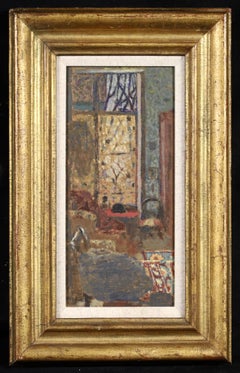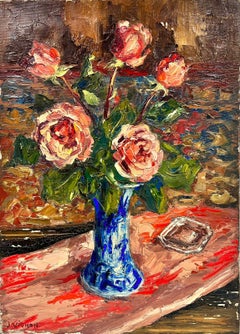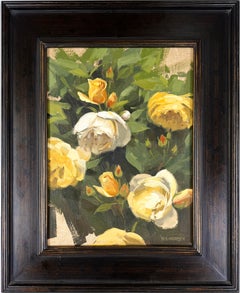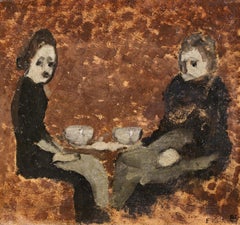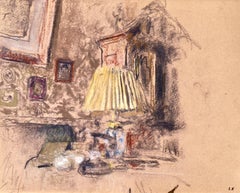Edouard Vuillard Paintings
French artist Edouard Vuillard was known for depicting intimate glimpses of Parisian life around the turn of the 20th century. His figurative prints, drawings and figurative paintings were concerned not just with their subjects but with the private surroundings of their homes and gardens. Vuillard was strongly influenced by Postimpressionist painters like Paul Gauguin.
Vuillard was born in the French commune of Cuiseaux in 1868. His family moved to Paris in 1877, and six years later, he received a scholarship to study at the prestigious Lycée Fontaine (now called the Lycée Condorcet). He graduated in 1885, joined the studio of painter Diogène Maillart and enrolled in courses at Académie Julian. Two years later, he was also accepted to the École des Beaux-Arts.
In 1889, the young Vuillard began meeting with a group of Symbolist painters and mystics known as Les Nabis (the prophets). For the subsequent decade, he was a prominent member of the group. During this period, Les Nabis and Vuillard himself were influenced by Japanese woodblock prints, featuring a blending of shapes and colors and a shallow depth of field. Any figures in the paintings seemed to meld into the background, and the loose brushwork prefigured the advent of abstract art.
Les Nabis broke up in 1900, and Vuillard's work took on a brighter and more colorful appeal. He turned his attention to painting gardens, joining a rich tradition of French garden painters. Vuillard was nominated for the Légion d'honneur in 1912, but he refused on the grounds that he did not seek compensation for his work other than the esteem of people with good taste.
After a brief stint in the military during World War I, Vuillard returned to life as a painter. In the 1920s, he was commissioned for portrait paintings by prominent Parisians like director Sacha Guitry, the Contesse Marie-Blanche de Polignac and fashion designer Jeanne Lanvin.
Throughout the 1930s, Vuillard received numerous commissions from the French government. In 1938, he had a major retrospective at the Musée des Arts Decoratifs and was elected to the Académie des Beaux Arts. He died in 1940, at the age of 71.
On 1stDibs, find Edouard Vuillard prints, drawings and paintings.
1890s Post-Impressionist Edouard Vuillard Paintings
Oil, Board
Mid-20th Century Post-Impressionist Edouard Vuillard Paintings
Canvas, Oil
2010s Post-Impressionist Edouard Vuillard Paintings
Oil, Wood Panel
Early 2000s Post-Impressionist Edouard Vuillard Paintings
Canvas, Oil, Board
Mid-20th Century Fauvist Edouard Vuillard Paintings
Board, Oil
1910s Post-Impressionist Edouard Vuillard Paintings
Oil, Cardboard
Mid-20th Century Post-Impressionist Edouard Vuillard Paintings
Oil
2010s Post-Impressionist Edouard Vuillard Paintings
Canvas, Lacquer, Oil
Mid-20th Century Post-Impressionist Edouard Vuillard Paintings
Canvas, Oil
20th Century Post-Impressionist Edouard Vuillard Paintings
Oil, Canvas, Panel
1950s Post-Impressionist Edouard Vuillard Paintings
Canvas, Oil
1930s Pointillist Edouard Vuillard Paintings
Canvas, Oil
Late 20th Century Post-Impressionist Edouard Vuillard Paintings
Pastel, Oil
1890s Impressionist Edouard Vuillard Paintings
Oil, Board
Early 1900s Impressionist Edouard Vuillard Paintings
Pastel, Board
Early 1900s Impressionist Edouard Vuillard Paintings
Canvas, Oil
